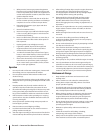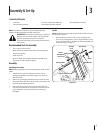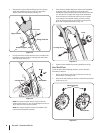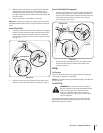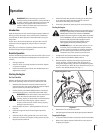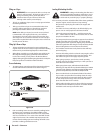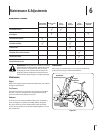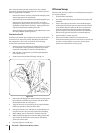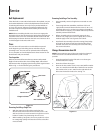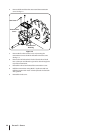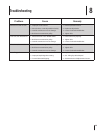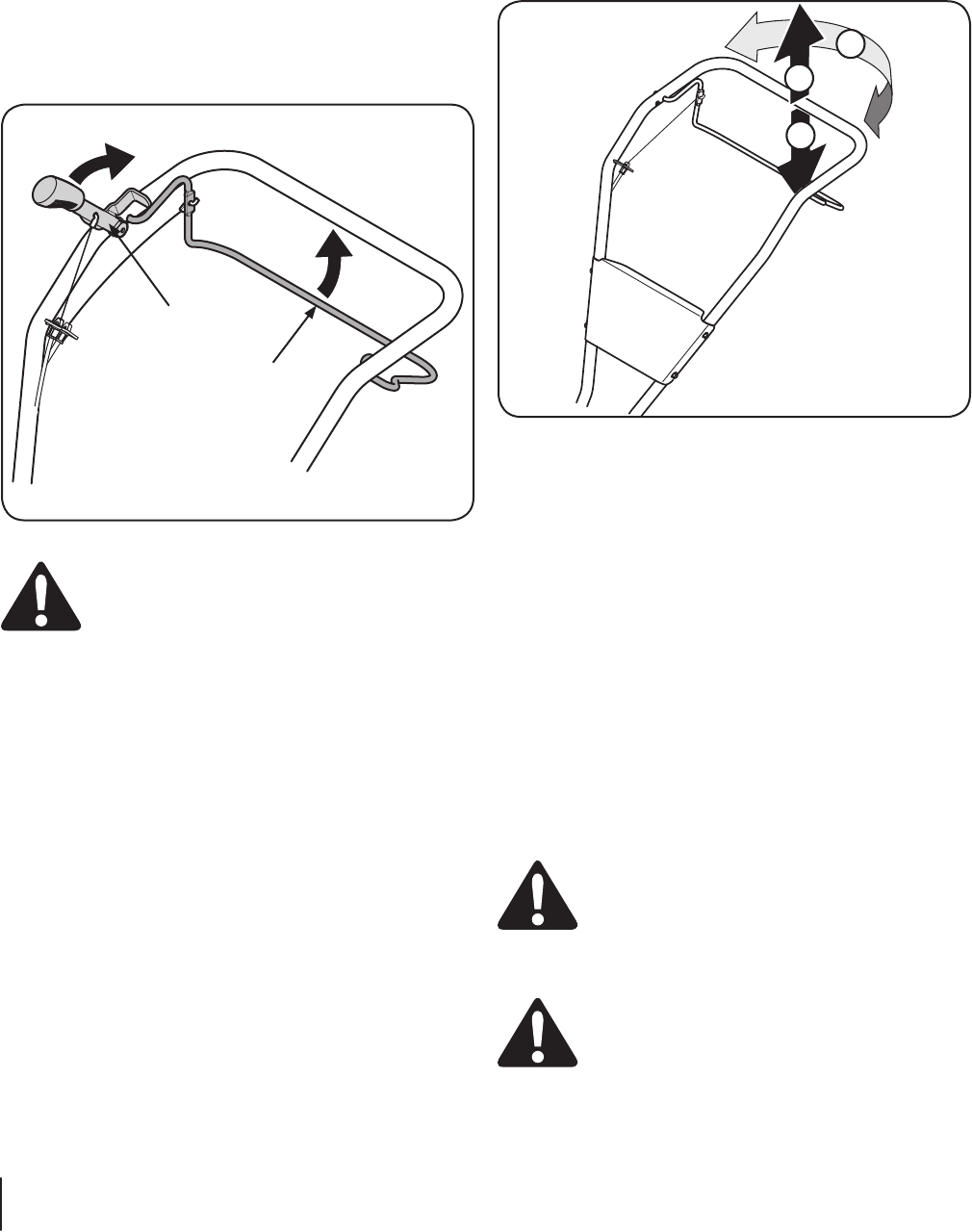
12 Section 5— operation
Engage Drive & Tines
For forward motion of the wheels and power to the tines pull
the Forward Clutch Bail up against the handlebar. Release
the bail to stop the forward motion of the wheels and tines.
2. When tilling, relax and let the wheels pull the machine while
the tines dig. Walk behind and a little to one side of the tiller.
Use one hand, yet keep a light — but secure — grip on the
handlebar (while keeping your arm loose). See Fig. 5-2. Let
the tiller move at its own pace and do not push down on the
handlebars to try and force the tines to dig deeper — this
takes weight off the wheels and reduces traction.
Forward Clutch Bail
Reverse Handle
Figure 5-2
WARNING! Do not push down on the handlebars to try
to make the tiller till more deeply. This prevents the wheels
from holding the tiller back and can allow the tines to
rapidly propel the tiller forward, which could result in loss of
control, property damage, or personal injury.
3. To move in reverse:
a.
Look behind and exercise caution when
operating in reverse. Do not till while in reverse.
Stop all forward motion. Lift the handlebar
with one hand until the tines are off the ground
and then pull the Reverse Handle back. To stop
reversing, let go of the Reverse Handle.
If longer distances need to be covered in reverse,
shut off the engine, then place the two wheels in
freewheel.
b.
Release the forward clutch bail. Then lift the
handlebar until the tines are off the ground.
Swing the handlebar to the left so the right
wheel takes a “step” backward. Next swing the
handlebar to the right so the left wheel “steps”
backward. Repeat as needed.
If longer distances need to be covered in
reverse, shut off the engine, then place the two
wheels in freewheel.
Turning the Tiller
Practice turning the tiller in a level, open area. Be very careful to
keep your feet and legs away from the tines.
To begin a turn, lift the handlebars until the tines are out of
the ground and the engine and tines are balanced over the
wheels. See Fig. 5-3.
3
2
1
Figure 5-3
2. With the tiller balanced, push sideways on the handlebar
to steer in the direction of the turn. See Fig. 5-3.
3. After turning, slowly lower the tines into the soil to resume
tilling. See Fig. 5-3.
Clearing the Tines
The tines have a self-clearing action which eliminates most tangling
of debris in the tines. However, occasionally dry grass, stringy stalks
or tough vines may become tangled. Follow these procedures to
help avoid tangling and to clean the tines, if necessary.
To reduce tangling, set the depth regulator deep enough to
get maximum “chopping” action as the tines chop the material
against the ground. Also, try to till under crop residues or cover
crops while they are green, moist and tender.
While tilling, try swaying the handlebars from side to side (about
If tangling occurs, lift the tines out of the soil and run the
tiller in reverse for a few feet. This reversing action should
unwind a good deal of debris.
WARNING! Before clearing the tines by hand, stop
the engine, allow all moving parts to stop and
disconnect the spark plug wire. Failure to follow this
warning could result in personal injury.
Tilling Tips & Techniques
Tilling Depth
WARNING! Before tilling, contact your telephone or
utilities company and inquire if underground equipment
or lines are used on your property. Do not till near buried
electric cables, telephone lines, pipes or hoses.
This is a CRT (counter-rotating tine) tiller. As the wheels
pull forward, the tines rotate backward. This creates an
“uppercut” tine action which digs deeply, uprooting soil
to spin in the soft dirt. Help them along by lifting up slightly
on the handlebar (one hand, palm up, works most easily).



